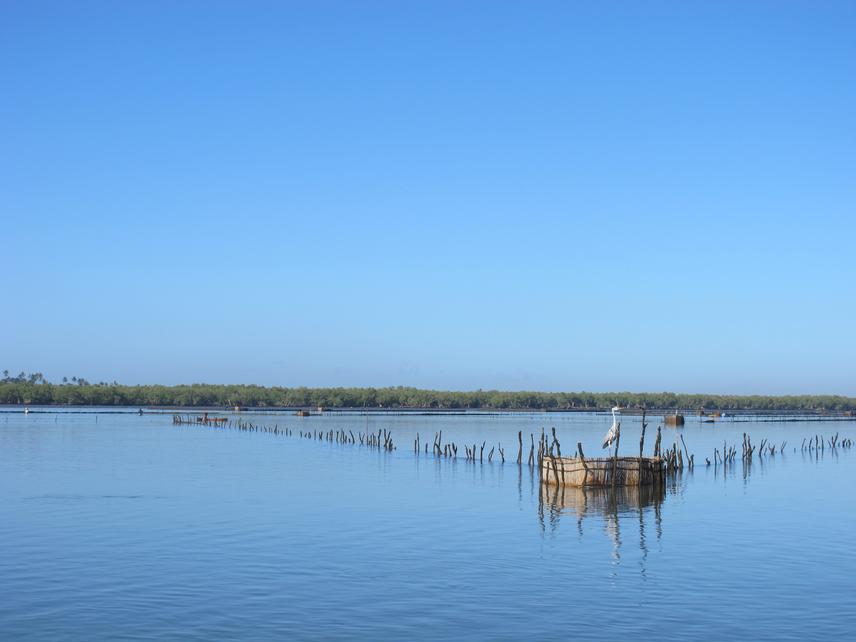Nasreen Peer
This research adds a scientific component to the existing framework of community conservation within the Inhambane Bay mangroves (Mozambique), and traditional knowledge to our existing scientific conservation knowledge in southern Africa. This project aims to use ecological and traditional knowledge methods for baseline surveys, to determine the impact of human use on mangroves, and the efficiency of community-based no-take zones. If successful, these results will be used to inform South African mangrove research and management protocols. This interdisciplinary, transdisciplinary and transnational research contributes to several Sustainable Development Goals.

Fishing traps are used to catch shrimp in this area. These are built using mangrove wood and reeds. On the outgoing tide, aquatic fauna are funnelled into the cylinder
The Inhambane Bay mangroves cover an area of approximately 5800 ha within the Inhambane Bay which also contains seagrass habitat. Because local communities are dependent on these habitats they have sought to establish manage and enforce nine no-take zones in an attempt to protect the mangrove fauna as well as the juvenile reef fish that use the bay as a nursery habitat. As a result, harvesting of fauna and any other use of the land is prohibited at certain locations either year round or for certain established periods and these rules are enforced by the local fishing council in co-operation with the government institutions and law enforcement authorities.
Ecologically, very little is known about Inhambane Bay. Each community governs their own area and have developed no-take zones based on traditional ecological knowledge. Although conservation measures are in place and monitoring is rigorous, the effectiveness of these zones has not yet been ecologically quantified.
The first step of this project was to map mangrove species and mangrove associated-fauna around the Bay using a combination of scientific survey methods and interview-collected indigenous knowledge. The next step is to address the effectiveness of community-implemented conservation measures. Using a combination of eDNA analyses, Baited Remote underwater Video (BRUV) techniques and interview data from local community members, we will be able to establish success of the community-designated no-take zones and to advise further. Aside from just helping the Inhambane bay fishing communities to answer their own questions, we hope to learn more about successful and inclusive conservation measures in an African context so that these lessons can be applied more broadly.